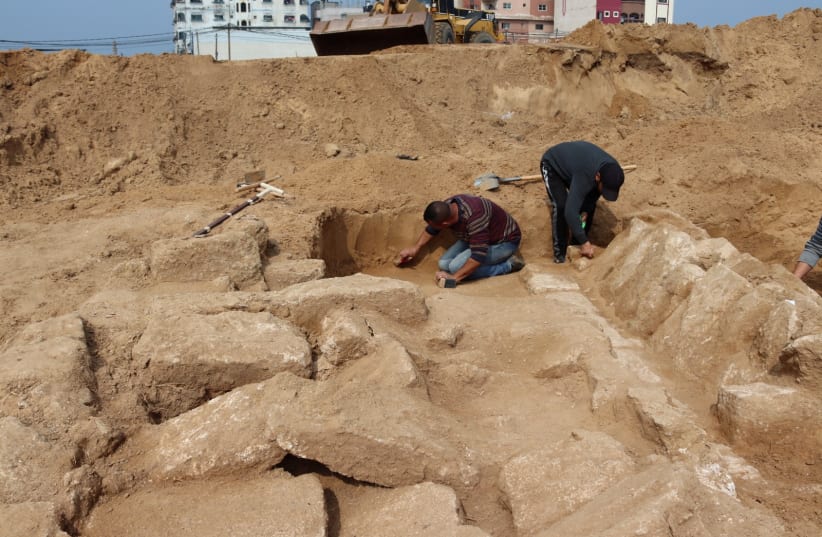A Palestinian farmer cultivating his land in the city of Khan Yunis in the Gaza Strip unearthed the head of an ancient sculpture which Palestinian archaeology authorities identified as Canaanite dating back to about 2500 BCE.
The head of the stone sculpture, which measures 22 cm tall, is carved from limestone, but the body is missing, according to WAFA, the Palestinian National Authority news agency. The head is topped with a snake crown, a symbol of strength and invincibility used by the Canaanite gods, the agency noted.
Canaanite sculpture dating back to about 2500 BC discovered in the Gaza Strip.https://t.co/zhafTcJoCs pic.twitter.com/pwdU5aDNEi
— Wafa News Agency - English (@WAFANewsEnglish) April 25, 2022
The news agency said the sculpture represents the Canaanite goddess Anah, the goddess of love, beauty as well as of war according to Canaanite mythology.
The goddess is also known by the names of Anat, Anatu, Antit and Anath among others, and was a major Semitic goddess worshiped in various incarnations also in Egypt, Ugarit in what is today the northern coast of Syria, Cyprus, Mesopotamia and a papyri account from Elephantine, Egypt, today modern-day Aswan mentions a goddess called Anat-Yahu who was worshiped in the temple dedicated to Yahweh built by Jewish refugees of the Babylonian conquest of Judah. There she was even described as the wife or consort of Yahweh. She is also thought to be the precursor of the Greek goddess Athena, as divine warrior maidens.
Bar-Ilan University professor of archaeology Aren Meir noted that the statue face was unlike any other he had seen, making it difficult to verify its origins or age despite the statement quoted in the press from the Hamas Ministry of Tourism and Antiquities identifying it as Canaanite, he said.
“I don’t recognize the statue as anything I have seen before. I don’t recognize it so I don’t know what it is. It is hard to say from what period it is,” he said.
Regardless, he said, noting the tendency of both Israeli and Palestinian archeologists to make political capital out of archaeological finds, trying to connect the statue in any way to current modern-day politics is “irrelevant.”
“One statue here or there doesn’t change anything... If it is real it is a very interesting find, but that is about it,” he said. “It could be something completely new or could have been brought from somewhere else.”

